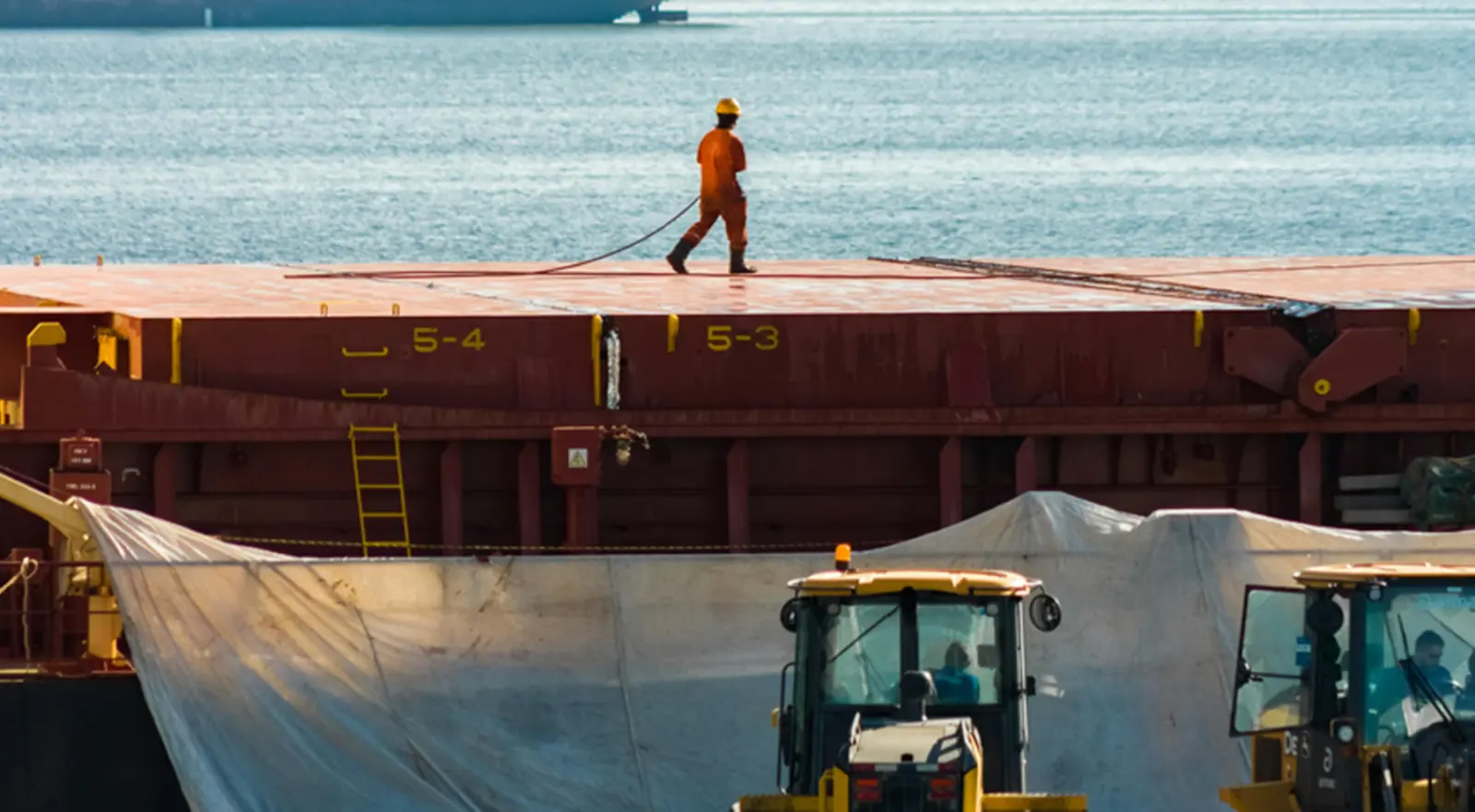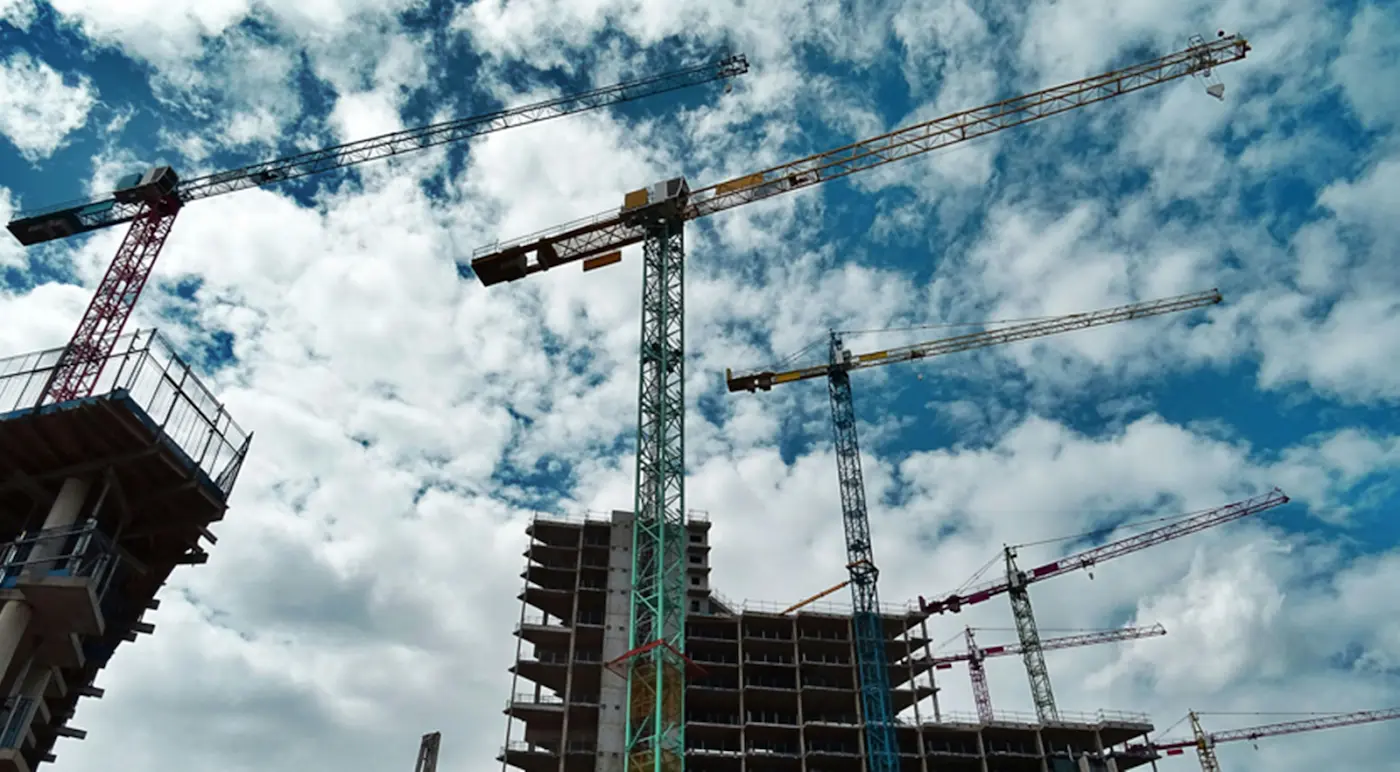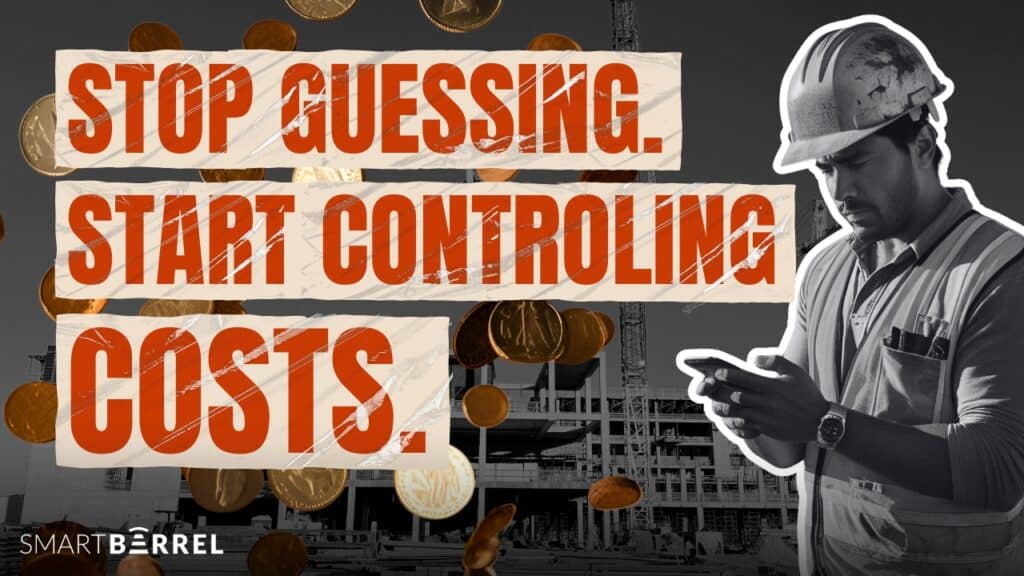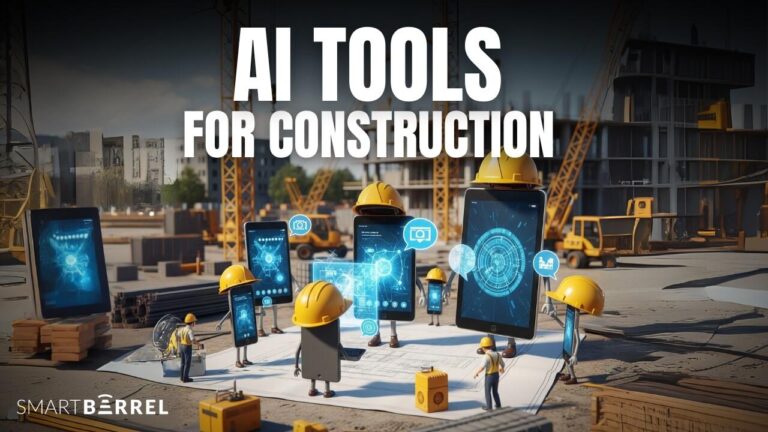In construction, every wasted dollar cuts directly into your profit margin, and poor cost control is often the culprit.
It’s a familiar story: a budget that misses the mark, labor hours that vanish into thin air, and hidden expenses that are bleeding your project dry. These minor miscalculations, when combined, create a giant drain on profitability.
But the good part is that these challenges aren’t inevitable.
In this article, we’ll pinpoint the top mistakes contractors make with cost control in construction and exactly how you can avoid them.
What is Cost Control in Construction?
Cost control in construction means managing, tracking, and adjusting a project’s budget.
We define effective cost control through four major steps. These are:
- Proactively preventing financial leaks
- Accurate labor tracking to manage change orders
- Developing and refining cost forecasts throughout the project lifecycle
- Analyzing Variances
However, these steps only lay the foundation for effective cost management.
To control costs, it’s just as important to recognize the most common mistakes that lead to budget overruns and financial inefficiencies. Here are:
Get Control of Your Time Tracking
7 Mistakes to Avoid for Better Cost Control in Construction Projects

#1: Inaccurate Cost Estimations
Inaccurate estimates are profit killers that set you up for budget overruns and embarrassing client conversations.
Most contractors and managers make three common mistakes, which lead to inaccurate or overly optimistic cost estimations.
- Relying on assumptions rather than concrete data
- Ignoring past project experiences
- Not accounting for risks
#2: Poor Jobsite Visibility and Untracked Labor Hours
Poor visibility and ineffective labor tracking lead to payroll disputes and profit leakage.
Many contractors struggle to verify actual hours worked only because there is no real-time labor tracking. Some managers try to use manual or paper-based methods, leaving room for buddy punching and outright time theft.
#3: Weak or Nonexistent Change Management Processes
Many managers still believe in handling change orders casually such as informal conversations, text messages, or undocumented agreements instead of formal paperwork.
If a company doesn’t bring in formal documentation, it becomes impossible to track the scope clearly, leading to unpaid work or strained relationships with stakeholders.
Case Study: Wembley Stadium
London’s Wembley Stadium suffered severe cost overruns from $458 million to over $1.5 billion.
This was because of poorly managed change orders and inadequate documentation, causing constant revisions and lengthy legal battles.
#4: Ignoring Indirect Costs Until It’s Too Late
Indirect costs such as maintenance, permit fees, site security, and administrative expenses often go unnoticed because they don’t appear directly on bids or daily reports.
But ignoring them doesn’t make them disappear. These hidden expenses add up quickly and can seriously affect profitability.
Think of skipping routine equipment maintenance to save costs. It might seem harmless in the short term, but a sudden equipment failure mid-project can lead to expensive emergency repairs.
#5: Reactive Instead of Proactive Risk Management

Most subcontractors react to issues rather than proactively managing risks.
To be honest, every contractor has to face unexpected weather delays, supply chain disruptions, or unforeseen site conditions. A reactive approach only makes it worse and gives:
- Expensive downtime
- Budget blowouts
Case Study: The World
Dubai’s “The World” islands project faced marine erosion due to poor risk management, causing massive financial setbacks exceeding $10 billion.
Mistake #6: Miscommunication and Poor Coordination Between Stakeholders
Poor communication breeds confusion and inefficiency. When subcontractors and managers aren’t aligned, mistakes occur, tasks get duplicated, and rework becomes inevitable.
Mini Checklist: Red Flags of Poor Jobsite Communication
- Frequent misunderstandings regarding project scope.
- Duplicate tasks or repeated work.
- Infrequent or unclear project updates.
- Workers often idle, awaiting instructions.
- Regular conflicts or disagreements among teams or subcontractors.
Mistake #7: Neglecting Real-Time Cost Tracking and Reporting
Delayed or outdated cost reporting blinds contractors to budget realities. Real-time tracking prevents costly overruns and saves your project from becoming a cautionary tale.
According to research, 61% of project managers report that technology reduces project errors and cost overruns.
Get Control of Your Time Tracking
8 Practical Cost Control Strategies for Construction Projects

#1: Implement Real-Time Labor Tracking
Real-time labor tracking provides accurate data on your crew’s onsite hours, ensuring every payroll dollar is justified.
SmartBarrel’s AI-powered facial verification scans each worker’s identity and logs hours automatically. Removing the guesswork from the process and streamlining payroll processing.
#2: Standardize Your Work Breakdown Structure (WBS)
A standardized WBS is used for outlining tasks, timelines, and budgets.
This approach provides accurate cost forecasting and simplified reporting. Managers can use historical project data to create reliable WBS templates.
#3: Manage Change Orders
Have a formal process for managing change orders from day one. Detailed documentation and formal approvals ensure every change is accounted for, keeping your budgets and timelines tightly controlled.
#4: Account for Indirect Costs
Indirect costs like permits, insurance, and equipment maintenance directly impact project profitability. Bring these factors into initial budgets and regularly review them throughout the project to maintain accuracy.
Pro Tip: Allocate fixed percentages of your budget to cover indirect expenses, ensuring your estimates remain realistic.
#5: Predictive Risk Management
Predictive risk management allows you to anticipate and address issues before they impact your project. After every 3-5 days, check for any threats such as material delivery delays, subcontractor no-shows, unexpected weather conditions, or scope creep. These checks are important to keep things running smoothly and within budget.
#6: Integrate AI and Automation to Boost Efficiency
AI-powered tools within SmartBarrel help streamline admin-heavy tasks like time tracking, payroll approvals, and daily reporting. These automated workflows reduce manual errors and free your team from repetitive data entry, letting them focus on high-impact work that drives revenue.
Pro Tip: Start with high-volume, error-prone tasks like time tracking and payroll approvals. The savings add up fast.
#7: Maintain Consistent and Transparent Team Communication
Clear communication across all teams keeps your project aligned and efficient. Regular briefings and project management tools will keep every team member updated on costs and responsibilities.
Hold daily or weekly “toolbox talks” to maintain clarity and strengthen jobsite collaboration.
#8: Schedule Regular Budget Health Checks
Consistent financial reviews ensure your project stays within budget from start to finish. Use real-time financial dashboards to visually track project costs and take quick corrective action.
The Digital Revolution of Construction Cost Management and How You Can Adapt:
1. Why Spreadsheets Fall Short in Today’s Construction Projects
Spreadsheets were never built for the jobsite. They’re static and prone to human error.
Worse – spreadsheets don’t scale. As projects grow, tracking costs across labor, materials, and change orders becomes unmanageable. There’s no real-time visibility and no accountability.
However, cloud-based platforms are built for modern construction.
Unlike spreadsheets, cloud tools like SmartBarrel give you live access to data. No more digging through outdated files or emailing spreadsheets back and forth.
- Need to see who actually showed up on site today? SmartBarrel logs every punch automatically.
- Want to check if a crew exceeded budgeted hours today? Pull it up on your phone.
That’s what cloud-based control looks like.
2. Real-Time Data = Real-Time Decisions
In construction, delay equals cost. If you find a problem two weeks too late, you’ve already paid for it.
Real-time data gives you a live view of what’s happening right now. You know where you’re bleeding money, and you can stop it fast.
SmartBarrel offers real-time labor tracking with AI-powered facial verification, so you know exactly who’s on-site, when, and for how long. That kind of visibility turns daily decisions into strategic actions.
3. Automating the Repetitive: Save Time, Cut Costs
Construction teams waste hours every week on tasks that could be automated, such as:
- Transcribing timesheets
- Tracking material usage
- Compiling cost reports
With digital tools, managers don’t handle these tasks manually. Smart systems automatically log labor hours; push approved timesheets to payroll, track material usage, and generate reports.
You’re not relying on someone to copy numbers from paper to spreadsheet or email to Excel. That’s fewer mistakes, fewer corrections, and fewer dollars lost.
4. Better Communication and Collaboration Through Digital Platforms
Construction moves fast. If your team isn’t aligned, you’re paying for it in rework, delays, and disputes.
Digital platforms close the communication gap. When field updates, budget changes, or approvals happen in one place, everyone stays synced. PMs know what’s happening onsite. Crews know what’s approved. Back-office staff don’t need to chase paperwork.
You avoid duplicated work, missed scope, and change order confusion.
Bonus: it creates a clear paper trail that’s gold during audits or payment disputes.
5. Digital Is No Longer Optional
Manual processes can’t compete. They’re slow and blind to real-time problems.
Your competitors who’ve already gone digital are already working faster than you.
The cost of doing nothing? Bleeding cash through outdated workflows. If you’re not tracking job costs in real-time, you’re losing control of your projects.
SmartBarrel helps make that shift easy. From labor tracking to automated reporting, it gives you the tools to run tighter and become 2x more efficient.
Start controlling your costs like it’s 2025, not 2005.
Get Control of Your Time Tracking
Future Trends in Construction Cost Control: What Should You Focus On?
Traditional construction cost control methods are being replaced by intelligent, data-driven solutions that offer greater precision.
But which change or emerging trend should bother you?
Below are seven emerging trends that are poised to redefine cost control in construction.
Trend | What It Is | Why It Matters for Cost Control |
1. Predictive Analytics for Cost Forecasting | Advanced software using historical project data and external variables to forecast costs and identify financial risks. | Enables project teams to anticipate budget deviations and make informed decisions before issues arise. |
2. IoT-Enabled Equipment Monitoring | Integration of sensors in construction equipment to monitor usage, fuel consumption, downtime, and maintenance schedules. | Enhances asset utilization, reduces unplanned maintenance expenses, and improves resource allocation. |
3. Digital Twin Technology | A digital replica of the jobsite that is continuously updated via connected tools, drones, and sensors. | Facilitates scenario planning and accurate cost simulations. Also reduces unforeseen expenses and improves budget adherence. |
4. Role-Based Dashboards and Cost Visibility | Customized dashboards delivering role-specific financial insights in real-time for project managers, site leads, and finance teams. | Improves operational clarity, ensuring that decision-makers have access to relevant, actionable cost data. |
5. Integrated Material Tracking Systems | End-to-end tracking of materials from procurement through installation, linked directly to budget and project data. | Reduces material loss and mitigates over-ordering. Works best for maintaining project budgets. |
6. AI-Powered Schedule Optimization | Artificial intelligence tools that analyze labor, logistics, weather patterns, and delivery timelines to generate suitable project schedules. | Prevents delays and minimizes idle labor costs for better project efficiency. |
Final Thoughts: Take Control Before Costs Take Over
Cost control is no longer about tracking expenses after the fact. It’s about owning every dollar in real-time.
The tools are here. The strategies are proven. And the contractors who move first will lead the market.
These construction leaders aren’t relying on spreadsheets and hope. They’re investing in systems that deliver clarity and control from day one.
Better cost control starts with clean labor data – construction time tracking software captures hours correctly the first time.
SmartBarrel is purpose-built for that shift. We support cost control through real-time labor tracking, facial verification, and jobsite visibility.
Ready to stop bleeding money and start running tighter, more profitable jobs?
Let’s talk about how SmartBarrel can help you lead the next phase of construction cost control.
Frequently Asked Questions
What are the three key factors in controlling overall construction cost?
Accurate labor tracking, real-time budget visibility, and proactive change order management are the top three.
When you control workforce hours and formalize scope changes, you minimize surprises and protect your margins.
What are the five key factors affecting time control in construction projects?
Labor productivity, weather delays, material availability, coordination between trades, and change order processing all directly impact schedule control. Staying on time requires real-time visibility and clear communication.
What are the greatest factors in construction costs?
Labor, materials, equipment usage, indirect costs, and project delays are the primary cost drivers. Poor planning or lack of visibility in any one area can trigger budget overruns and lost profits.
What is the biggest expense in construction?
Labor is typically the largest cost of any construction project. Without accurate time tracking and cost control systems in place, the area of loss and dispute becomes the biggest.




